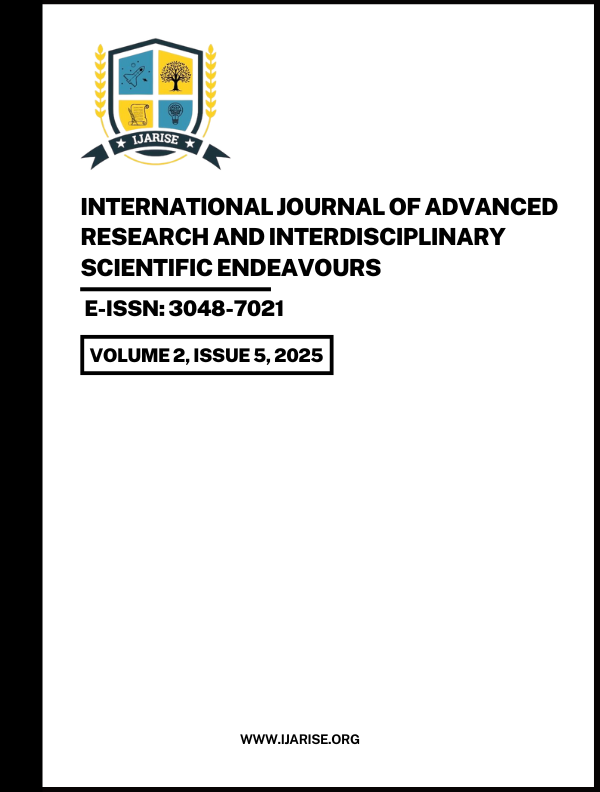Household Solid Waste Generation Rate and Physical Composition Analysis in Case of Assosa Town, Benishangul Gumuz Regional State, Ethiopia
Published 2025-05-30
Keywords
- Solid waste,
- Household,
- Composition,
- Waste management,
- Generation Rate
How to Cite
Copyright (c) 2025 International Journal of Advanced Research and Interdisciplinary Scientific Endeavours

This work is licensed under a Creative Commons Attribution 4.0 International License.
Abstract
Mismanagement of solid waste has been the main problem facing society around the globe today, and especially in developing countries. This study aims on the household solid waste generation rate and analyses the physical composition analysis in Assosa town of Ethiopia. Assosa is one of the fastest-growing cities in Ethiopia that has largest population growth rate and urbanization. Due to the abysmal solid waste management practice, its residents suffer from severe health problems. The problem relies upon a lack of awareness on the impact on human health and the lack of adequate solid waste disposal nearby. This study was conducted based on a survey questionnaire distributed to 373 randomly selected families and an in-depth interview with the responsible body. The main findings are that daily household solid waste generation is directly related to household income and household size. The low, middle and high income households rate of daily waste generation per capita per day were 0.22, 0.31 and 0.41kg, respectively. The physical composition of solid waste mainly consists of 87.4% organic. The study also found that most of the solid waste in Assosa town can easily be decomposed and recycled. Therefore, awareness of the creation of safe disposal sustainable solid waste management practices (resource reduction, reusing, recycling, and composting) is crucial for the environment and human health.

